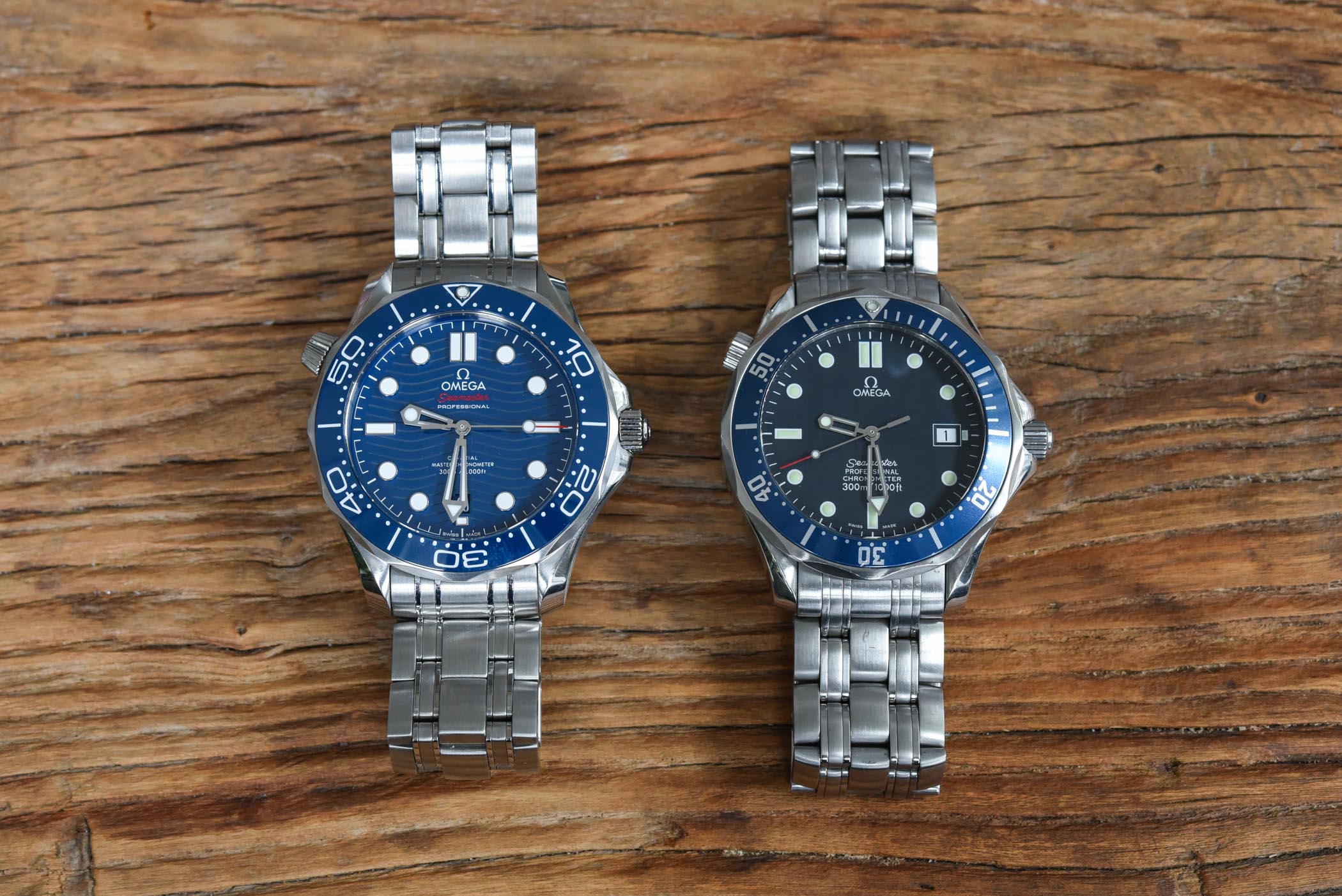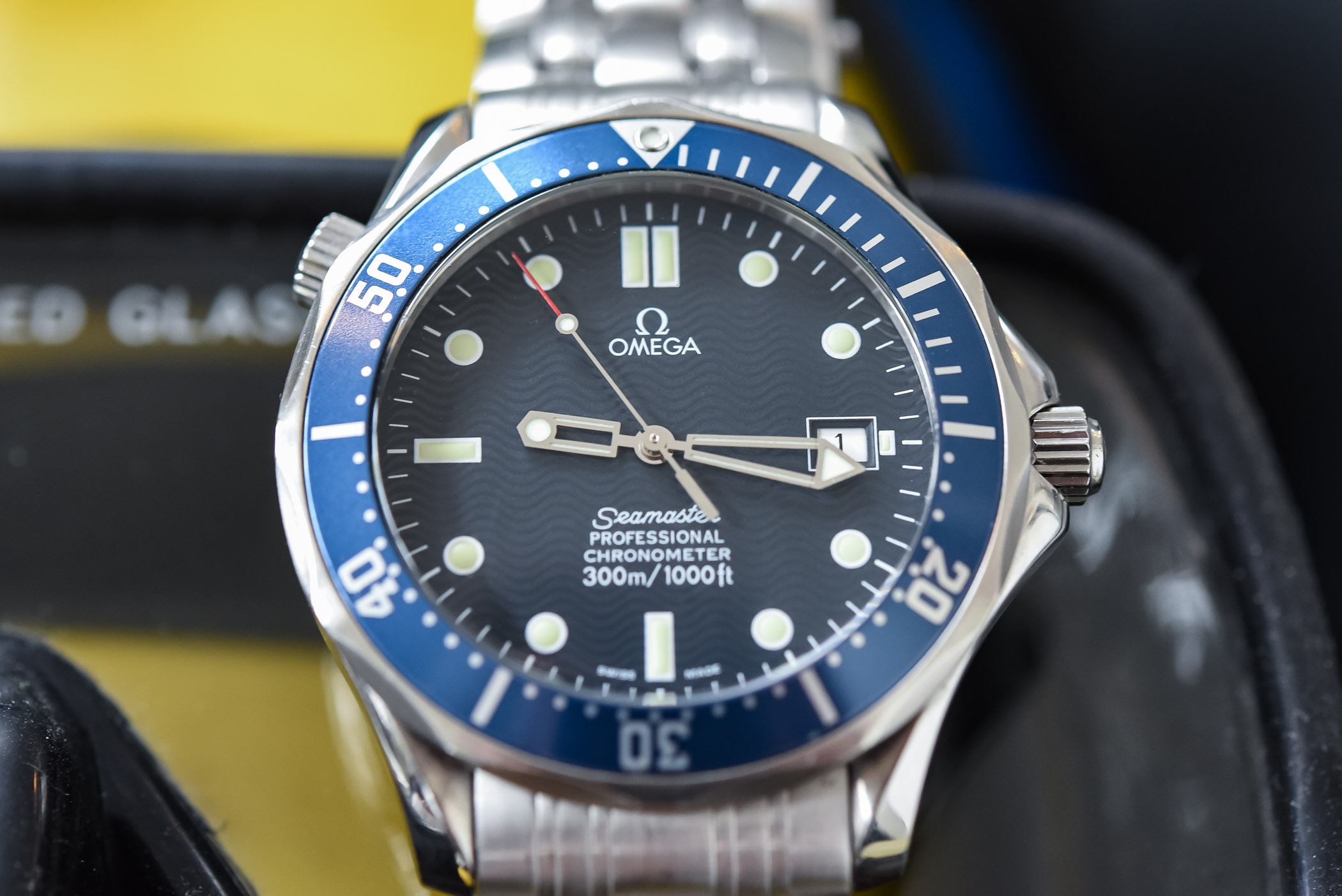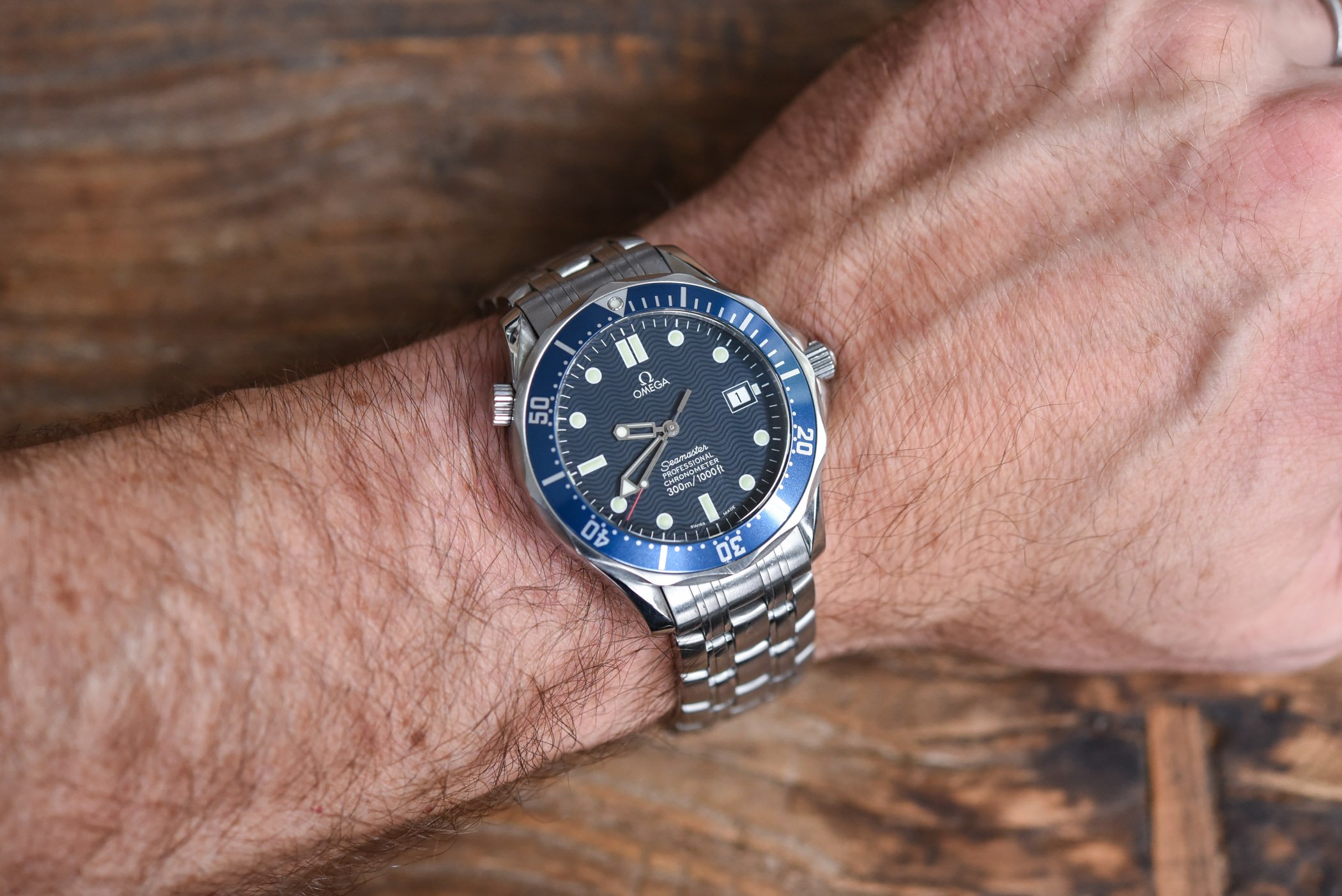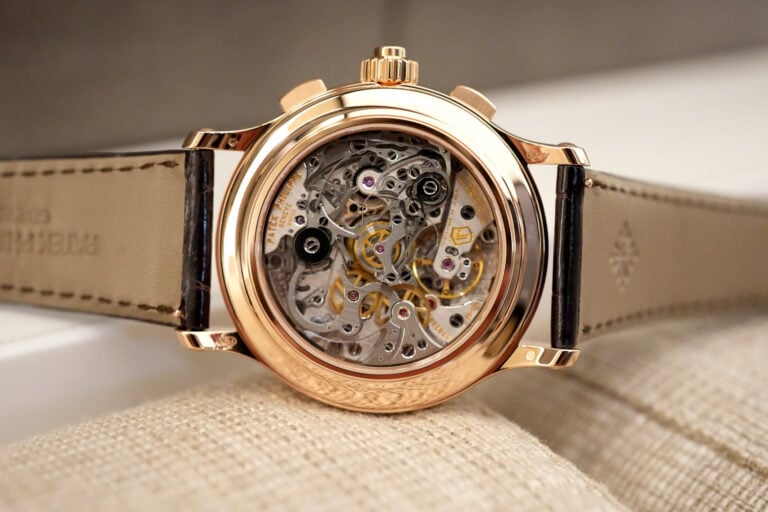The Omega Seamaster Professional 300M, The Birth of Omega’s Diver Icon
And it’s also the most famous Bond watch to date…

For this entry in The Collector’s Corner (our series of articles focused on great youngtimer watches), we are returning to the depths of the ocean with another dive watch. The Omega Seamaster Diver 300M, also known as the SMP (Seamaster Professional), might not be as over-engineered as the IWC Deep One we explored in our previous installment, but its impact on Omega was profound. With the Seamaster Diver 300M, Omega finally had a knockout design for its dive watch, a design that celebrated its 25th anniversary in 2018 with a thorough modernization.

Whereas the other big names in the dive watch space like the Rolex Submariner and IWC Aquatimer started off as purpose-built tool watches, the Seamaster had far more genteel beginnings – even though it’s built after the expertise the brand gained in making watches delivered to the British Ministry of War. As explained by the director of the Omega Museum in this video, the technology was “war-tested but commercialized as a child of peace”. The Seamaster itself watch designed for “town, sea and country”, a dustproof and waterproof watch that relied on a rubber gasket to protect it from the elements – hardly the rough and tumble watch with 300 meters of water resistance that we know today!
Brief history of Omega underwater watches
Omega’s history with waterproof watches can be traced by to the Omega Marine ref. 679 from 1932, which was the world’s first commercially available watch for underwater adventures. As Rolex had beaten Omega to the punch with its use of rubber gaskets and a screw-down crown in its Oyster from 1926, Omega had to resort to different means to guarantee hermeticity. In a bit of foreshadowing that would mark how Omega would take on the challenger Rolex in the 1960s, the older brand went with the technical and over-engineered approach: the Marine came equipped with cork seals and a double-case construction that clamped tighter as external pressure increased. Though the Marine might have taken a sledgehammer to crack the nut of water resistance, so to speak, no one can deny it didn’t work: the watch was tested in a laboratory five years later and was found to be water resistant to 135 meters!

The original Seamaster CK2518 was launched in 1948 to commemorate Omega’s 100th anniversary. The evolution of the Seamaster is a reflection of the age of exploration that saw the rise of watches built for specific purposes: the 1950s gave us the racing watch, the engineer’s watch, the pilot’s watch, and the dive watch. Five years after the arrival of the Seamaster, two dive watches were born that would cement our expectations of the genre: the Blancpain Fifty Fathoms and the Rolex Submariner introduced external rotating bezels, copious amounts of luminous material for visibility under water, and robust water resistance as must-haves for a dive watch to be taken seriously.

Not to be outdone, Omega entered the race in 1957 with a trio of three “Professional” watches: Seamaster 300, Speedmaster, and Railmaster. The Seamaster 300 CK2913 quickly established itself as a reliable workhorse and even accompanied famed explorer and conservationist Jacques-Yves Cousteau on his Precontinent II Expeditions in the Red Sea in 1963, a series of tests to create an environment where people could live for extended periods on the seabed without adverse effects. As the dive watch “arms race” heated up, and record after record was broken as man went ever deeper into the ocean, the Seamaster went through several iterations in the early 1970s that pushed its water-resistance first to 600 meters, then 1000 meters.

At this time, however, the storm clouds of the quartz crisis had already begun to darken – 1969 saw Omega release the Electroquartz, the first production Swiss quartz watch powered by the Beta 21, a collaborative effort by 20 Swiss watch companies (Centre Electronique Horloger) working together for the purpose of creating a reliable, accurate, and efficient enough quartz movement that it could be used to power a wristwatch. Quartz technology found its way to the Seamaster line with the 1980, Royal Oak-inspired, Plongeur De Luxe line of dive watches made popular by record-breaking French freediver Jacques Mayol.

Jumping forward to 1993, ten years after the formation of the Swiss Corporation for Microelectronics and Watchmaking (now known as The Swatch Group), Omega debuted the Seamaster Professional Diver 300M, a.k.a the Omega SMP. Positioned then as a refined and luxurious dive watch, it was a clean break from the design language of the Seamaster 300 and 600 of the previous decades, with a more elaborate case and dial design. Two years later, the Seamaster Diver made its film debut on Pierce Brosnan’s wrist in GoldenEye, and the rest, as they say, is history!
The Omega Seamaster Professional Diver 300M, the Basics
Let’s get the fact sheet out of the way. The Seamaster Diver 300M is a 41.5mm watch measuring 11.4mm in thickness. The case shape is one we know well: it incorporates design cues that are quintessentially Omega, such as lyre lugs and an asymmetric shape to incorporate the crown guards. The case band is thin, longitudinally brushed, and flows straight into the lugs, which are polished on their wide bevels. At roughly ten o’clock, you find the cylindrical helium escape valve that has become an instantly-recognizable design element on modern Omega dive watches… and invited endless debate on its usefulness and looks.
Framing the dial is a decorative bezel that makes a departure from the traditional knurling found on most dive watches in favor of a more elegant scalloping, with brushed recesses. The bezel insert, complete with a luminescent pearl at twelve o’clock, is an anodized aluminum piece in blue with silver graduations for the timing indications. Keeping with the blue theme, the dial is also navy blue and is decorated with a stamped wave pattern over its whole area – a true distinctive element of the early models. The lume plots (rectangular for the quarters, circular for the others) are large and bordered with white to further improve legibility. A side note here; the earliest Bond Seamasters were made in an era when Omega was still using tritium luminous paint, so the choice is yours whether you want to go for the aged tritium look or the full functionality of Luminova. The date disk is white for optimal legibility and located where you would expect to find it at three o’clock. The hands are skeletonized, with thin strips of lume on the borders leading to the tips.
The bracelet deserves a mention, as it’s part of the SMP 300 appeal. On its release, the bracelet was a game changer because of its bank-vault build quality. The bracelet is a five-piece design with a combination of polished and satin-finished links. It’s functional, though not as plain as a Rolex Oyster; dressy, though not as jewel-like as a Rolex Jubilee. The bracelet ends in a hefty, machined twin-trigger clasp. Hidden in the clasp, for the hardcore dive enthusiasts who’ll also be using the helium escape valve no doubt, is a fold-out dive extension to allow for quick adjustment for use over a wetsuit.
Above: Omega SMP Quartz 2541.80 (left) and Automatic 2531.80 (right)
The quartz ref. 2541.80.00 is the true Bond watch – this is the version of the SMP 300 that made it on 007’s wrist in Goldeneye. An automatic version, with a modified chronometer-grade ETA 2892-A2 inside, was also available as reference 2531.80.00. And this one was the watch worn by 007 in all subsequent movies starring Brosnan. This is no 2892 clone, however: the ETA caliber was significantly reworked to do duty as the Omega caliber 1120 – the jewel count was upped from 21 to 23, the power reserve likewise increased from 42 to 44 hours.
To fill the gaps between the introduction of the Bond SMP in 1993 and the 25th-anniversary Master Chronometer launch in 2018, here’s a brief overview of the model’s evolution. The first came about in 2006, with the launch of the ref. 2220.80.00. The Bond became a slightly chunkier watch, at 12.7mm in thickness, but received a more upscale dial. The Omega logo as well as the indices were now applied, and the Seamaster script was printed in red. This generation also received the first generation of Omega Co-Axial calibers, the 2500, which in its earliest iterations was plagued with reliability issues. In 2011, the Bond entered the ceramic era: the characteristic wave dials of the OG-Bond Seamaster were phased out in favor of glossy black or blue ceramic, to match the ceramic dive bezel.
Why you Should Consider the Omega Seamaster Professional 300M / SPM
From the conversations I’ve had about it, the Bond Seamaster seems to be a love it or hate it watch, particularly when it comes to that helium escape valve! What it definitely isn’t, however, is bland. This is an incredibly characterful diver, and, if you ask me, it’s also a bit of a paradox. Let me try to explain what I mean. First off, the Bond Seamaster is an incredibly capable watch – it has a depth rating of 300 meters, it has a tank-tough movement, and it even has a helium escape valve for saturation diving. In short, it’s a proper tool watch in every definition of the term. Yet, it can easily do double-duty as a more formal watch, with its fancy bezel, skeleton hands, and elegant lugs – Bond was wearing with a tuxedo, after all. In short, it’s a do-it-all, wear-it-everywhere watch. If you like the design, I think that alone is justification enough to go for it – in a world of Submariner look-alikes, the Bond SMP 300 is unabashedly different.
The second reason to consider the Seamaster Professional 300M is its film association, even if it is now slightly overdone. If the watch is good enough for James Bond, it’s certainly good enough for me and you! The Seamaster marked a turning point for Bond on the silver screen. Prior to GoldenEye, 007 sported a variety of watches from Rolex, Seiko, Breitling, Tag Heuer, and even Gruen on his wrist. 26 years after Omega’s first appearance as the Bond watch, the association remains as cool as ever.
Whereas the previous watches featured in this series are low-volume, if not outright rare, references, the Bond Seamaster is still easy to find and is incredibly accessible. In fact, that’s part of its appeal – it’s refreshing that you can get such an iconic watch from one of the top names in mainstream luxury horology, for relatively little money as these things go. Expect to pay between 2,500 and 3,000 Euros for both quartz and mechanical examples, depending on condition (we certainly recommend the automatic version…) The price point makes it a perfect watch to recommend for most occasions: as a graduation watch, a gift for the horology enthusiast, or even a grab-and-go beater.
Despite its technical achievements, the Seamaster was a bit of a runner-up to the Submariner for many years. All that changed with GoldenEye, when Omega struck gold with the Bond association, which continues to this day. The Seamaster Professional 300M has maintained 25 years of design continuity, and I for one am happy about that! Long live the SMP.


















6 responses
It bears a brief mention that—just like the Speedmaster—Omega released a sizable number of variations and special editions of the Seamaster Pro 300M over its lifespan.
Most notably, in my opinion, is the 2254.50. A black dial and bezel, sword hands and a oversized triangular marker at 12, it really has more of an old-school tool/military vibe than the Bond versions.
True, Rudy, there have been some very attractive variations. Another one that I personally like a lot, is the Seamaster GMT (ref. 2234.50.00) that looks pretty similar to the 2254.50.
Ad lauded as that bracelet and clasp was, I find them to be the reason my 2531.80 gets left in the drawer sometimes. For such a thin watch, it’s simply too heavy and noticeable at times, and the lack of micro adjustments limit the usefulness on hit days or times when you might work up a sweat. It’s brilliant on a nato or leather. And the Forstner president bracelet with its light weight and micro adjustments gives thing thing a 2nd life. It disappears onto the wrist now
I have an omega seamaster 300 automatic 2002 which is made from titanium with matching bezel, I’m surprised it was not mentioned in the above article as it’s a lightweight version
the best seamasters are the 2254.50.00 & 2264.50.00
Purchased new in 2001, I have the slightly smaller automatic version of this watch. I have never seen another one or read anything about the smaller version and have no idea how its value compares with its larger sibling. It has never looked or felt out of place on my quite large wrist, I’m still glad I chose the smaller version, worn daily and for any occasion, it’s very comfortable and has served me superbly over the years..